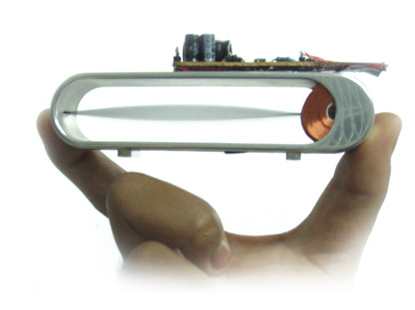Horizontal progress is about creating a better mousetrap, while vertical progress is about finding a better way to catch a mouse. While this may appear to be a simple play on words, it is an important distinction when it comes to obtaining investors, talent, and assessing risk and profit potential.
When people consider what the future will hold, they typically think about the evolution of an industry. That evolution or progress can take one of two forms. Horizontal progress is taking things that already work somewhere else and introducing them to a new market or making them a little bit better in an existing market. Horizontal progress is easy to imagine because we already know what it looks like. Vertical progress means solving a problem in a whole new way. Vertical progress is harder to imagine because it requires doing something nobody else has ever done.

To demonstrate the difference between horizontal and vertical progress, let’s look at the wind energy industry. Not long ago, I was researching residential wind turbines. Everyone is familiar with the three-bladed turbines on the huge towers that use lift to turn a shaft and generate electricity. Many manufacturers make smaller versions for home use based on the same basic principles. In fact, many companies in this market claim to have a revolutionary new wing shape or to use a special material to create greater performance. Most wind turbines have either three, five, or seven blades that rotate around a horizontal shaft. Others may even rotate around a vertical shaft, however, in the end, they all use blades and lift to turn a shaft and therefore are all about the same. Wind energy innovations using a turning shaft and rotating blades represent horizontal progress in that industry. After all, not much has changed since windmills first appeared to grind grain in the 7th century.
Then there is the wind energy manufacturer that devised a product based on a completely different technology. Humdinger Wind Energy used the physics of aero flutter to develop wind belts that use a thin membrane that oscillates between two coils of wire to generate electricity.
Wind belts, unlike all the other wind generators, do not rely on rotation or lift to convert wind speed into energy. Instead, they are based on a completely different set of laws of physics and this innovation represents vertical progress.
Peter Thiel in his book Zero to One defines horizontal progress as taking something that works in one geography and introducing it in a new one, while he defines vertical progress as technical innovation where there is no existing completion.
When your business solution is based on introducing an existing technology already in use in another country or making incremental progress, it means that you have competition. With competition, your competitors can pressure you on margins, which results in much of your profits being competed or whittled away. According to W. Chan Kim and Renee Mauborgne in their book Blue Ocean Strategy, businesses based on horizontal progress operate in a contested or Red Ocean.
On the other hand, vertical progress is about creating something new. Either through patents or first-mover advantage, you have the ability to capture value through high margins and achieve capital accumulation to accelerate your market dominance. Businesses based on vertical progress operate in an uncontested or Blue Ocean.
Google, Amazon, eBay, and Facebook were essentially businesses that made vertical progress and captured large margins to dominate their market. Investors and quality talent flock to companies designed around vertical progress solutions because these companies offer the greatest chance of success. However, because these companies represent something quite new, their potential customers need to be informed of the very existence of the solution.
So how can you, as the product developer for your small business, change your perspective from differentiating your offering with minor horizontal innovations to finding a whole new uncontested Blue Ocean product offering, using vertical progress? You could ask your customers and consumers; however, they are often not the best source of inspiration for new products or services. As Henry Ford once said, “If I had asked people what they wanted, they would have said faster horses.” A better source to find a new uncontested Blue Ocean product or service is to look at the customer’s journey from purchase to disposal with the Buyers Utility Map as we discussed in How to Create a Leap in Customer Value.
For vertical progress companies to succeed, their business model will rely heavily on a successful marketing campaign to educate prospective customers that an entirely new solution is available to an old problem with entrenched offerings. My Invisible Fencing franchise business was protected by a patent at the time I ran it and represented a company based on vertical progress because the use of a radio transmitter and receiver emitting a tone and slight stimulation was a new way to keep pets in a yard. Customer acquisition costs were high but so were our margins.
In contrast, companies based on horizontal progress, such as chain-link and stockade fencing companies in the pet containment industry, have benefited from customer awareness of their solution. Margins in horizontal progress companies will be small and returns will be achieved primarily through economies of scale. As such, they do not attract the same level of excitement from investors and world-class talent as the companies that focus on vertical progress.
Is your product or service idea focused on vertical or horizontal progress?












